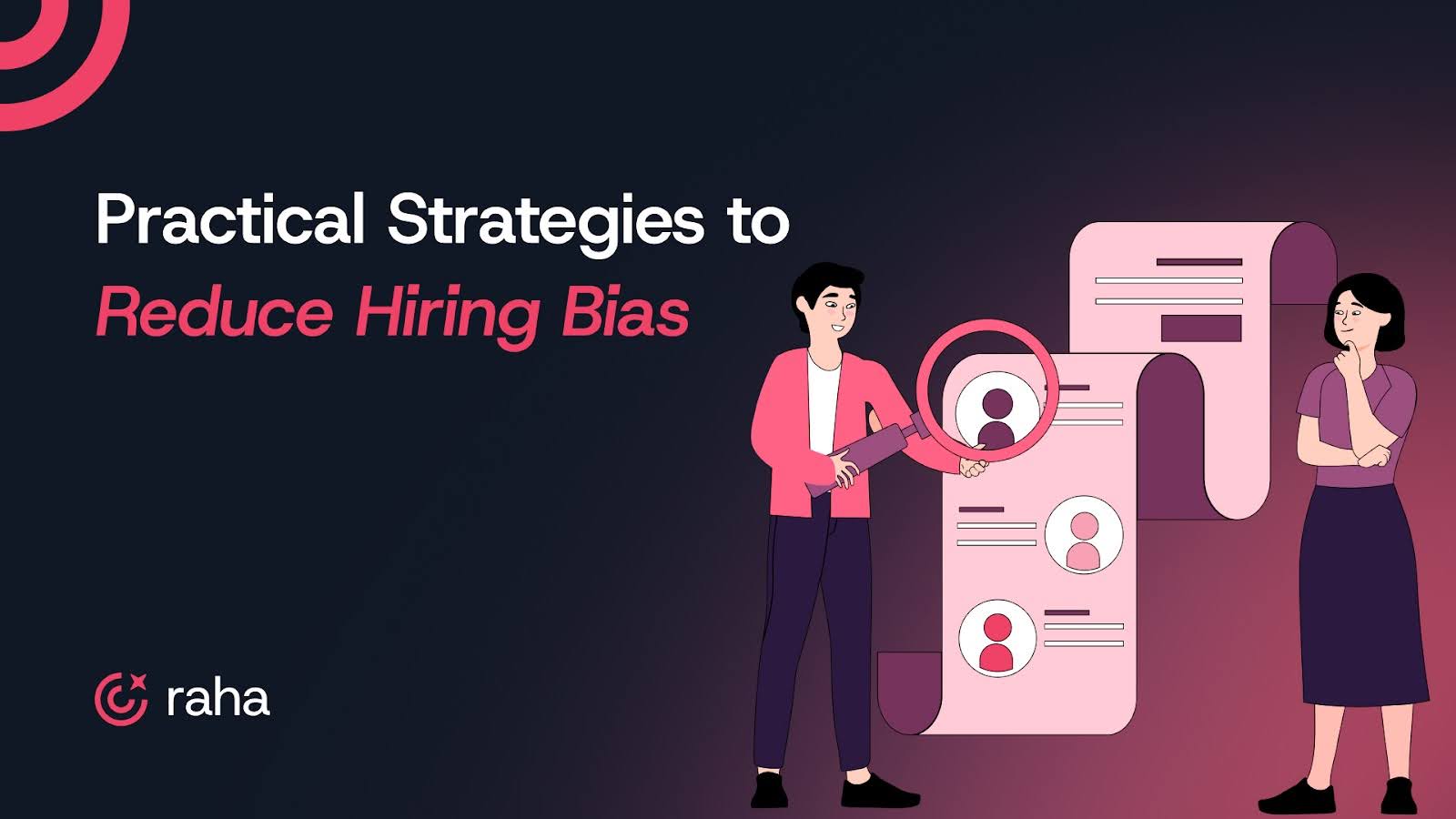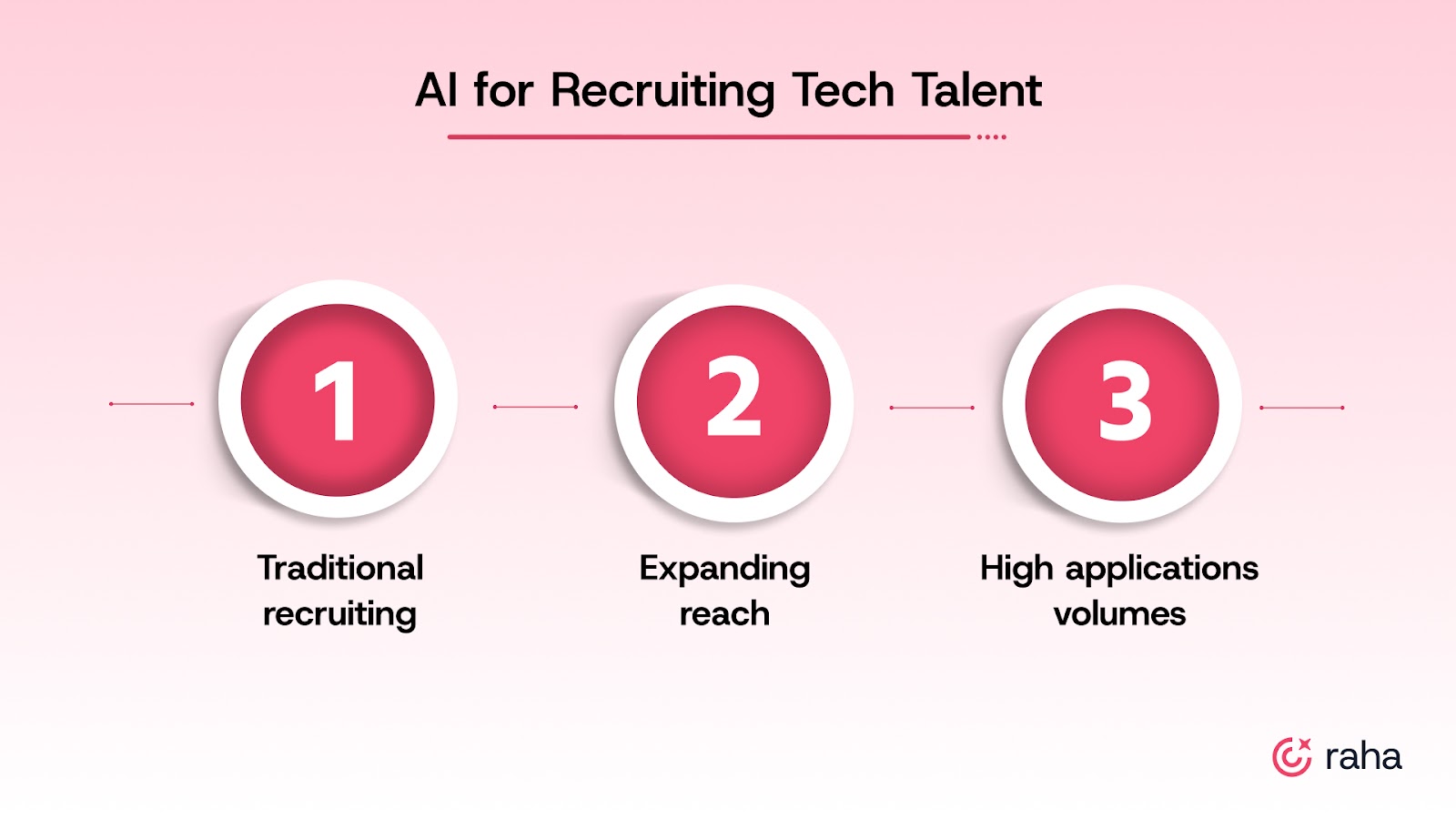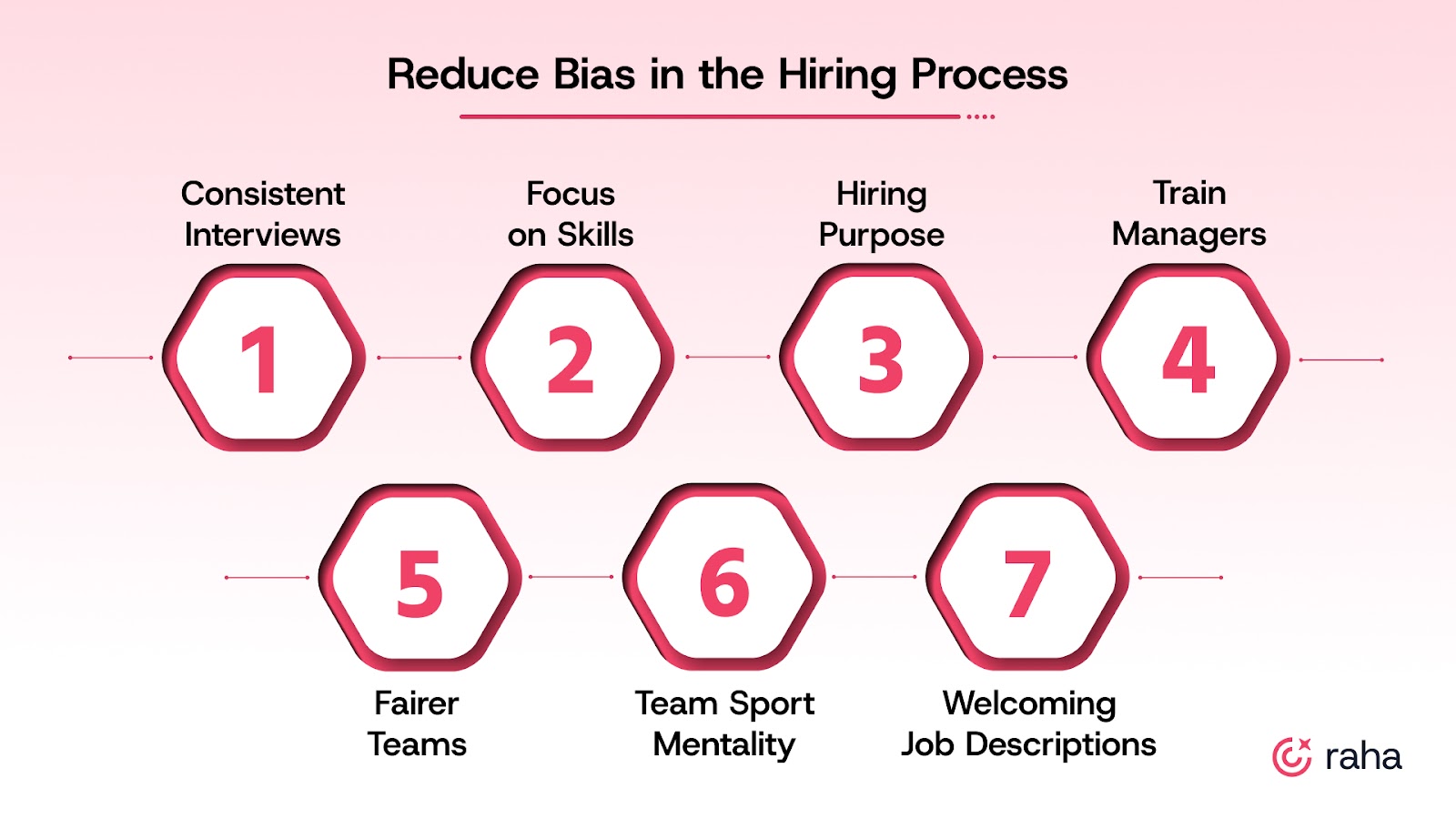
You’re not reading this to be told that bias is bad. You already know that. It doesn’t announce itself in the intake meeting or during the final debrief. It shows up quietly, in the way job descriptions are written, in how resumes are filtered, and in which candidates are remembered first during debriefs.
And most of the time, it’s not deliberate. It’s structural. It’s baked into how hiring decisions get made when the process isn’t built to catch it. Hiring bias can occur even in teams that care deeply about fairness and quality, especially when they’re moving fast, juggling multiple roles, and trying to hire at scale.
And it’s not just a DEI concern. It’s an operational issue. It weakens hiring accuracy. It narrows the talent pool.
This guide unpacks where bias tends to hide in everyday hiring workflows—from sourcing and screening to interviews and scorecards. It also lays out the practical systems high-performing teams are using to reduce bias without slowing down. Let’s get into it.
What is Hiring Bias?
Hiring bias is a silent productivity killer that is affecting your ability to hire the right people. Whether it’s favoritism for candidates who share similar traits or a lack of diversity in the pool, it’s all causing you to miss out on the best talent. What is worse is that it is costing your team innovation and fresh perspectives.
Hiring bias doesn’t always look obvious, but it shows up in different ways. Here's how it typically manifests:
1. Unconscious Bias
This one sneaks in without you even realizing. It’s when you gravitate toward candidates who look or sound like you or people you’ve hired before. Sure, you might feel more comfortable with someone who went to the same school, but that doesn’t mean they’re the right fit.
2. Affinity Bias
This is when you hire someone because they remind you of yourself. Maybe they went to the same university or have the same hobbies. It feels natural, but it limits diversity. You’re hiring for comfort, not potential.
3. Confirmation Bias
Ever get a gut feeling about a candidate? Then you look for evidence that confirms that feeling, ignoring red flags along the way? That’s confirmation bias, and it can cloud your judgment.
4. Halo/Horn Effect
A single good or bad trait can skew your perception of the whole candidate. Perhaps they aced the interview, but you overlook their lack of experience. Or they fumbled one question, and suddenly, you’re writing them off entirely.
5. Gender, Racial, and Age Bias
It’s 2025, and biases like this should no longer exist. But unfortunately, they do. These biases lead to hiring decisions based on irrelevant characteristics, such as gender, race, or age, rather than actual job performance. It’s a major problem when it comes to diversity, equity, and inclusion.
Recognizing the various types of bias in hiring is the first step to ensuring a fair recruitment process. Addressing these biases and understanding their impact on the organization is equally important.

Why Hiring Bias is a Threat to Organizations?

Hiring bias directly impacts your organization’s ability to thrive. When bias, whether unconscious or conscious, influences hiring, you miss out on the best talent. More importantly, you undermine the long-term success of your company. Simply put, you're creating a hiring process that rewards similarities rather than unique qualifications and fresh perspectives.
1. It Undermines Diversity and Inclusion
Bias in hiring is a direct hit to your diversity and inclusion efforts. You might think you’re hiring the best candidate for the job, but what you're doing is hiring the candidate who fits into the mould you've already created.
A homogeneous team brings the same set of experiences and approaches, which limits innovation. That diverse voice you’re overlooking could be the one that helps your company break into new markets, challenge the competition, and accelerate your growth.
2. You Miss Out on Talent and Ideas
The risk of bias goes far beyond excluding someone who “doesn’t fit.” When you favor candidates based on similarities, you miss the opportunity to bring in individuals who could bring new energy and creative thinking to your team.
Bias prevents you from hiring for potential, and instead, you focus on comfort. But comfort doesn't grow your business. It doesn’t push the boundaries or challenge your status quo. By hiring the same type of people repeatedly, you create a glass ceiling for innovation and growth.
3. It’s a Risk to Your Reputation
Bias in hiring isn’t just harmful to your team and culture; it’s a potential legal minefield. Discriminatory hiring practices can lead to lawsuits, compliance issues, and severe reputational damage. A company known for biased hiring isn’t just at risk of alienating top talent; it’s also at risk of losing the talent it has.
When your company is associated with discriminatory practices, your brand becomes tarnished, and candidates will think twice about joining. This translates into lower morale, higher turnover, and a damaged employer brand that could take years to rebuild.
Bias doesn’t go away on its own. It takes a process built to catch it, without slowing you down. Here’s how to do it right.
Must read: Artificial Intelligence in HR: Use Cases and Key Benefits
How to Reduce Bias in the Hiring Process: 7 Practical Strategies

When bias creeps into your recruitment, you miss out on the best candidates, limit innovation, and risk damaging your company’s reputation. This is how you can deal with it without reinventing the wheel.
1. Make Interviews Consistent and Fair
Prepare a structured interview guide with clear, role-related questions that focus on the skills, qualifications, and experiences relevant to the job. For example, avoid asking candidates questions like, "How do you see yourself fitting into our team?", which can be subjective and leave room for bias.
What you can do:
Focus on competencies that matter for the job. Instead of asking about “fit,” ask: "Tell me about a time when you managed a project deadline. How did you handle competing priorities?"
Example: Use a rating rubric with predefined metrics to score candidates on key competencies such as communication, problem-solving, and technical skills. This ensures that you're not hiring based on gut feel, but rather on solid, fair assessments.
2. Focus on Skills, Not Backgrounds
Resumes are often filled with hidden biases. Names, photos, and even geographic locations can influence how a recruiter views a candidate before they even read the resume. Blind recruitment, where identifying details are removed, helps solve this problem.
What you can do:
Remove any identifying information, such as gender, age, ethnicity, and even hobbies or personal interests that don’t contribute to job performance.
Example: Use AI-powered tools like Raha to screen resumes, flagging qualifications and skills instead of personal details. You can automatically exclude names, addresses, photos, and even educational institutions to eliminate bias.
3. Get Clear on What You’re Hiring For
Bias thrives when expectations are vague. If you don’t define what success looks like in a role, you leave too much room for gut instincts and assumptions to drive decisions.
What you can do:
Set objective, measurable criteria before the hiring process begins. Replace vague traits like “positive attitude” with specifics like “led cross-functional teams to deliver on project deadlines” or “experience implementing cloud-based tools in a mid-sized company.”
Example: Instead of listing “cultural fit,” define the actual requirements: “5+ years managing a marketing team” or “strong knowledge of Python for data analytics.” Use these criteria to shape your interview questions and evaluation scorecards.
4. Train Managers to Spot Bias
Most hiring managers don’t realize how bias influences their decisions. Without the right training, they often fall back on instinct, and that’s where bias tends to creep in.
What you can do:
Make bias training part of your hiring process. Avoid one-off workshops. Instead, teach managers how to spot patterns like affinity bias (when a candidate reminds them of themselves) or confirmation bias (when they look for evidence that supports a gut feeling).
Example: Use short, practical sessions with real interview scenarios to help teams recognize and interrupt bias during hiring. The goal is to build awareness and encourage fair, consistent decisions.
5. Use Metrics to Build Fairer Teams
Bias doesn’t always show up in one decision. It often hides in patterns across teams, roles, and stages of your hiring funnel. Without data, you won’t see it.
What you can do:
Track hiring metrics by stage. Look at pass-through rates by gender, ethnicity, and education level. How long does it take to hire someone from a different background? Are some groups dropping off earlier than others?
Example:
If you notice that candidates from a specific demographic consistently reach the interview stage but rarely receive offers, that’s a red flag. Conduct regular audits to identify areas where your process is falling short.
6. Make Hiring a Team Sport
When one person makes the hiring decision, their bias, conscious or not, shapes the outcome. A diverse interview panel helps balance that out.
What you can do:
Bring in interviewers from different backgrounds, departments, and levels. Each person views the candidate through a different lens, leading to a more comprehensive and fairer evaluation.
Example:
Instead of relying on a hiring manager alone, include 2–3 team members in the process. This reduces the influence of any one person’s bias and helps you focus on who’s actually best for the role.
7. Write Job Descriptions That Welcome Everyone
Job descriptions are often your first impression. If the language is biased or overly narrow, you could be turning away qualified candidates without even knowing it.
What you can do:
Avoid vague or loaded terms like “rockstar,” “dominant,” or “aggressive.” Focus on the actual skills and experience required for the role, rather than personality traits.
Example:
Instead of saying “looking for a high-energy team player,” try “experience working in cross-functional teams to deliver projects on tight deadlines.” Inclusive language attracts a wider, more diverse pool of applicants and provides you with better choices.
Checkmark Table for Reducing Hiring Bias
Use this table to audit your hiring process. Make each step bias-aware, so your team brings in the best people fairly.
Implementing these strategies can significantly reduce bias in your hiring process, leading to fairer and more effective recruitment outcomes.

Business Gains You’ll See When You Reduce Hiring Bias
You hear “reduce bias” and think: sure, that’s nice to have. But if you’ve been hiring long enough, you know it’s the only way to stay sane, move fast, and build teams that don’t implode in six months. Here’s what actually gets better:
1. Your Teams Become Sharper, Faster, and More Productive
Homogeneous teams may feel easier to manage, but they hit a ceiling fast. When you bring in people who see things differently, that’s when innovation starts to compound.
According to Forbes,
- Inclusive teams make better decisions 87% of the time
- They move twice as fast and meet less often
That kind of edge compounds fast.
2. People Perform Better Because They Know They Belong
When someone feels like they were hired for who they are and what they bring, they perform at a different level. According to HBR,
- A strong sense of belonging drives a 56% jump in performance
- It cuts turnover risk by 50%
At scale, that’s not just a culture win, it’s a cost-saving machine. For a 10,000-person company, that can mean over $52 million saved every year.
3. You Build a Culture That Keeps Great People
Bias doesn’t just impact who you hire; it decides whether people stay. When hiring is fair and inclusive, it sends a signal throughout the company that diverse thinking is welcome.
Gallup found that engaged employees are significantly more likely to say their company values diverse ideas. And when people feel heard and represented, they stay longer, contribute more, and help attract others who do the same.
4. And Yes, It Shows Up in Your Bottom Line
This isn’t just about culture, it’s about competitive advantage. Companies that prioritize representation and reduce bias in hiring don’t just feel better to work in. They perform 36% better, according to McKinsey, for companies in the top quartile for ethnic and cultural diversity.
Reducing bias changes who you hire, how well they perform, and how long they stay. But it doesn’t happen on its own.
The first real shift? Getting the right tools in place—starting with AI.
Also read: What is Recruitment Process Automation?
How Raha AI Helps Reduce Hiring Bias
Raha is an AI agent that handles two of the most bias-prone steps in recruiting: resume screening and first-round interviews. And it does both with speed, consistency, and objectivity baked in.
AI Resume Screening That Focuses Only on What Matters
Raha parses resumes into structured data and screens candidates. It eliminates bias by not accessing personal identifiers like name, gender, or educational background. Instead, it scores each profile purely on role-specific criteria drawn from your job description. And AI Interview Coordinator works in harmony to collect, store, and organize digital records, ensuring that the recruitment team can access critical information swiftly.
- Raha’s Real-Time ATS Sync ensures that all candidate data, including interview feedback and scheduling, is updated instantly, providing transparency across the recruitment process. This integration with ATS systems maintains a continuous flow of accurate candidate data, ensuring that HR teams and recruiters stay up-to-date without the hassle of manual data entry.
- Furthermore, Raha AI helps businesses comply with GDPR and other data privacy regulations by ensuring encrypted data storage and offering easy-to-manage digital records for recruitment teams.
and not names, schools, or formatting.
- Filter by role-specific criteria
- See scores based on your JD
- Eliminate early bias in seconds
AI Interviews That Vet Candidates Fairly and at Scale
Raha calls every shortlisted candidate, asks them screening questions, and sends back a fit report.
- Consistent questions for every candidate
- Parallel calls for high-volume roles
- Reports you can trust to move fast
As a result, you get 10x faster candidate screening and time to hire reduced to 15 days.
Skill-Based Hiring Starts With Better Tools
Reducing bias is essential for building stronger, more diverse teams. With tools like structured interviews, blind resume reviews, and consistent scoring, your hiring process becomes more equitable and more effective.
Raha AI helps you make that shift. Its AI Resume Screener and Interviewer remove noise from the process, so every candidate is evaluated on skills, not assumptions.
Want to see how it works?
Get your first 10 interviews free and start hiring more fairly—with speed and confidence.

